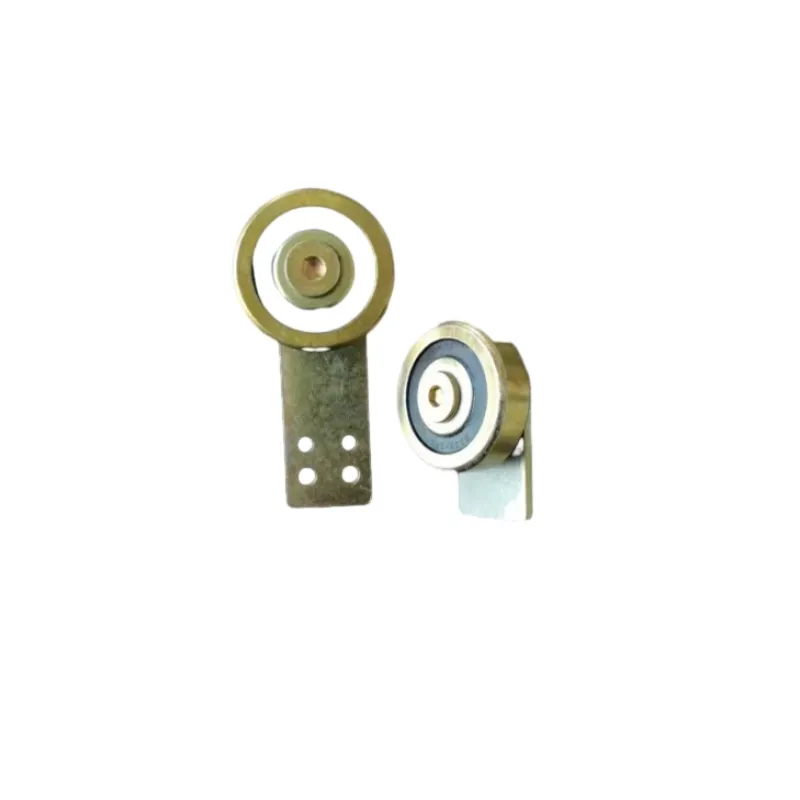
Dec . 11, 2024 11:42 Back to list
cylindrical roller bearing dimensions
Understanding Cylindrical Roller Bearing Dimensions
Cylindrical roller bearings are crucial components in various mechanical systems, known for their ability to handle high radial loads and provide relative ease of maintenance. These bearings consist of cylindrical rollers, making them particularly suitable for applications where high load capacity and superior rigidity are essential. In this article, we will delve into the dimensions of cylindrical roller bearings, outlining their significance, parameters, and applications.
What are Cylindrical Roller Bearings?
Cylindrical roller bearings are a type of rolling element bearing that utilizes cylindrical-shaped rollers to reduce friction between the moving parts. Unlike ball bearings, which have spherical elements, cylindrical roller bearings can support heavier loads and withstand higher speeds. They are constructed with an outer raceway, an inner raceway, and a number of cylindrical rollers that fit between the two races.
Key Dimensions
Understanding the dimensions of cylindrical roller bearings is crucial for selecting the right bearing for an application. The primary dimensions include
1. Inner Diameter (d) This measurement refers to the diameter of the inner ring of the bearing. It is critical to select the correct inner diameter to ensure a snug fit onto the shaft.
2. Outer Diameter (D) The outer diameter is the measurement of the outer ring's diameter. Proper sizing is essential for the bearing to fit correctly within the housing.
3. Width (B) This dimension refers to the thickness of the bearing, measured from one side to the other. The width affects the bearing’s load-carrying capacity.
4. Roller Diameter (dr) and Number of Rollers (n) The diameter of the rollers impacts the bearing’s load distribution and overall capacity. More rollers can mean higher load capacity but may also affect friction and heat generation.
5. Rib Width (r) Ribs provide additional support for the rollers within the bearing, and the rib width must be considered to optimize performance.
Tolerance and Fit
Besides the standard dimensions, tolerances and fits are also crucial in the selection process. Tolerances define the allowable limits of variation in dimensions, which directly affect the performance and lifespan of the bearing. An appropriate fit between the bearing and the shaft is vital; it can be classified as loose, transitional, or interference, depending on the specific application and operating conditions.
cylindrical roller bearing dimensions

Factors Influencing Dimension Selection
Several factors come into play when selecting the dimensions of cylindrical roller bearings, including
- Load Conditions The type and magnitude of loads that the bearing will experience significantly influence dimension choices. For heavy radial loads, a larger inner and outer diameter may be required.
- Speed Higher rotational speeds may necessitate bearings with specific dimensions tailored for reduced friction and heat generation.
- Environmental Conditions External factors such as temperature, dust, and humidity can affect dimension selection, as bearings in harsh environments may require additional sealing or protective features.
- Installation and Maintenance Bearings that are easy to install and maintain might differ in dimension from those that are meant for heavy-duty applications with longer lifespans.
Applications
Cylindrical roller bearings find applications in various sectors, from automotive and aerospace to industrial machinery and power generation equipment. They are commonly used in
- Electric motors - Gearboxes - Conveyors - Heavy machinery
Their ability to handle both axial and radial loads makes them invaluable in these applications.
Conclusion
In summary, understanding the dimensions of cylindrical roller bearings is essential for engineers and designers working on systems that require reliability and efficiency. By selecting the appropriate dimensions while considering the application’s specific needs, one can ensure optimal performance and longevity of machinery and equipment. As technology advances, the design and specifications of cylindrical roller bearings will continue to evolve, catering to the growing demands of modern engineering solutions.
Latest news
-
Premium Deep Groove Ball Bearings | High Speed & Reliability
NewsAug.29,2025
-
Durable Scaffolding Clamps - Secure & Reliable Tube Connectors
NewsAug.28,2025
-
Common Failures in Thrust Ball Bearings and Solutions
NewsAug.22,2025
-
How Tapered Roller Bearings Can Take Shock Loads
NewsAug.22,2025
-
Angular Bearings in High-Precision Spindles
NewsAug.22,2025
-
The Impact of Misalignment on Cylindrical Roller Bearing Performance
NewsAug.22,2025
